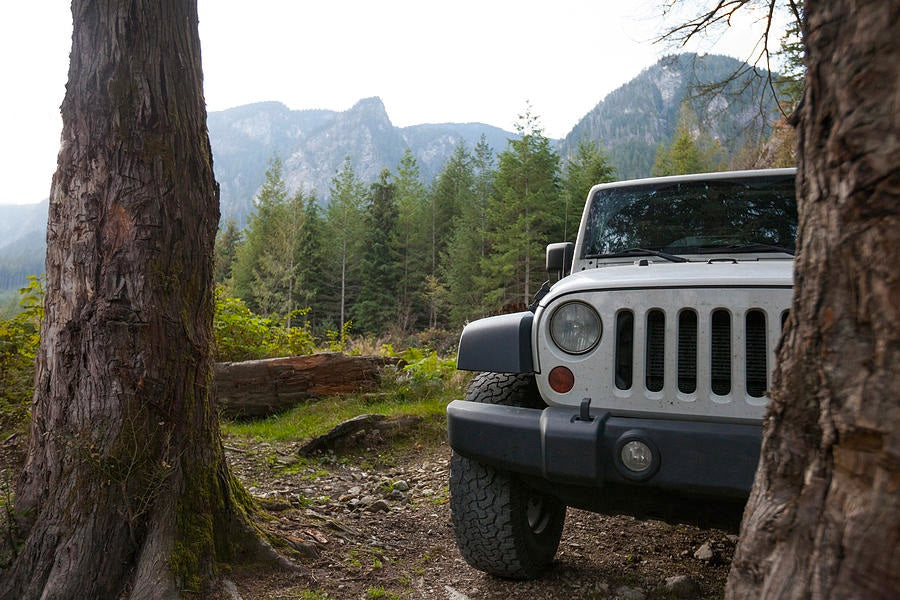Off-roading is an exhilarating adventure, but ensuring your vehicle is equipped with the right 4x4 accessories is crucial for safety and performance. When off-roading, it's critical to properly prepare for each trip ahead of time by putting together an off-roading essentials kit with the emergency must-haves needed for efficient on-the-trail repairs and recovery in the backcountry.
At Ausgo, we enjoy and support all forms of off-roading—whether it's on two or four wheels. We set out to help fellow off-road enthusiasts better prepare for their next adventure by compiling these FAQs to address your concerns before you hit the road.
FAQs on Emergency Essentials for Off-Roading
1. What are the must-have accessories for safe off-roading?
Some of the most necessary items to carry when off-roading in the backcountry are emergency items, especially when exploring in remote areas or high country where temperatures and trail conditions can fluctuate wildly. We recommend carrying the following emergency essentials in your vehicle:
- First aid kit
- Work light
- Blankets
- Fire-making supplies
- Food and water
2. Why is a first-aid kit important for off-roading?
A first-aid kit is crucial for handling minor injuries and emergencies while off-roading, especially in remote areas where medical help may not be readily available. It allows you to respond to emergencies immediately, tending to injuries such as cuts, scrapes, insect bites, burns, and fractures. By providing instantaneous care and relief, you can prevent conditions from worsening or worst case scenario bacterial infection.
3. How does a work light help during off-roading?
A work light, flashlight, or headlamp is essential for vehicle repairs, maintenance, and food preparation at night. It ensures visibility in low-light conditions.
4. Why should I carry blankets and extra clothing layers?
Temperature always drops during nighttime. Blankets and extra clothing layers provide warmth in case of unexpected overnight stays and help regulate body temperature in fluctuating weather conditions.
5. How much food and water should I pack for off-roading?
A: Pack enough food and water to last the intended duration of your trip, plus extra in case of emergencies. For short trips of 1–2 days, pack easy-to-eat, high-energy snacks like protein bars, nuts, and dried fruit, along with simple meal options. For trips of 2–3 days, bring non-perishable foods like canned goods, pasta, rice, dehydrated meals, or vacuum-sealed meats.
Meanwhile, for drinking, pack 4 liters of water per person per day. For both drinking, cooking, and hygiene, pack 6–8 liters per person per day. In hot or desert conditions, it’s essential to have 10+ liters per person per day to ensure you stay hydrated and energized.
FAQs on Car Accessories: Be Prepared for Any Situation
1. Why is recovery gear essential for off-road adventures?
Carrying a complete vehicle recovery kit will help you avoid unforeseen mishaps. Even the most experienced off-roaders can find themselves stuck in sand, mud, or rocky terrain. That’s why having reliable recovery gear is non-negotiable.
2. Why is off-road lighting important for nighttime driving?
When you’re off-roading, visibility can make the difference between an exciting adventure and a dangerous mishap. Off-road driving lights are a must-have for anyone venturing off the beaten path since off-road trails can be unpredictable, especially after dark. Proper LED lighting ensures clear visibility and enhances safety.
Must-Have Lighting Accessories:
- LED Light Bars: Wide-beam coverage for better trail visibility, and they help increase visibility for other drivers on the road, signaling your presence.
- Roof Searchlight: Focused illumination for long-distance visibility, these roof searchlights make it ideal for seeing far down trails or across open terrain.
- Rock Lights: Illuminate the terrain around your vehicle to avoid obstacles, brightening up the ground and surroundings during off-road adventures, especially in dark conditions.
3. Why are side steps and rock sliders important for off-road vehicles?
They provide next-level protection against the hazards of off-roading. This is especially important for 4x4 vehicles. Having durable side steps on the side of your vehicle gives you a strong surface to step on when you need to enter and exit the vehicle on uneven off-road terrain.
4. How do all-terrain and mud-terrain tires differ?
Having the right set of off-road tires is critical for maintaining traction on rough trails. Pair them with a portable air compressor to adjust tire pressure on the go.
All-terrain tires are a great choice if you do a mix of road driving and occasional off-roading, as they provide good handling and traction in most conditions. Furthermore, these tires offer decent performance in light snow thanks to their aggressive tread pattern.
Meanwhile, mud-terrain tires give you added grip in some winter conditions due to their large tread blocks designed for serious off-roading. These tires have treads with more gripping edges, featuring sipes that provide maximum traction in muddy, rocky, or other challenging terrains.
5. How can I protect my vehicle's interior during off-roading?
Simply protect your car's interior by using high-quality floor mats, cargo mats, and bonnet protectors to keep it clean and protected from dirt, spills, and debris.
Plan Ahead for Your Next Off-Road Adventure with Ausgo
Planning and preparing for an off-road adventure may seem a little overwhelming. Still, it's better to be prepared than to feel regretful that you weren't. By following these FAQs, you can protect your vehicle's interior and exterior and get ready.
Before you hit the road, invest in high-quality off-road accessories to ensure a safer and more enjoyable experience. Ausgo 4x4 provides rugged, reliable car accessories designed for Australia’s toughest terrains.
No matter what you choose to bring with you in your off-roading, exercise caution, prepare for the extremes, and above all, have fun and tread lightly.



